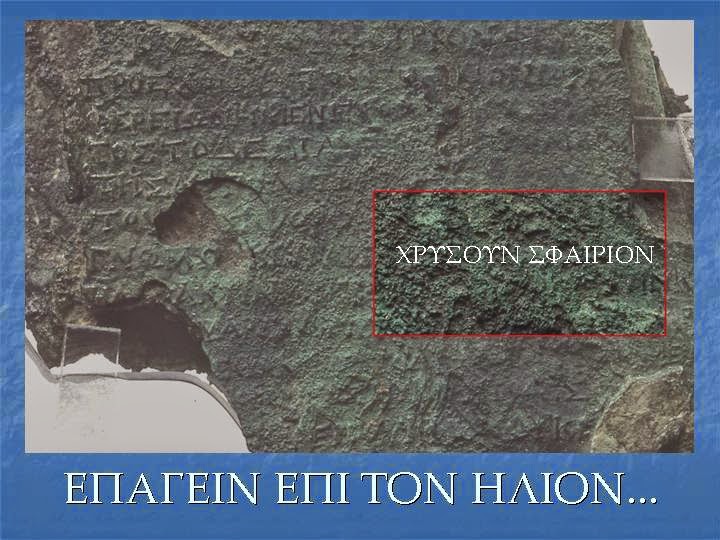
Katerina Peristeri, Head of excavation and head of the Inspectorate of Antiquities Serron, He talked about the excavations. Ministry officials indicated that this will be the final notice of excavation, Plus now initiates the investigation of Amphipolis.
Volume was caused at the end of the presentation by Ms. Peristeri, by journalists, as though showed photos of the discoveries, did not show anything about the skeleton. The SME representatives insisted, asking in what attitude found the skeleton, where and how, but did not get responses. The only reported Ms. Peristeri was that the skeleton found "under difficult conditions, covered with soils and delivered with great attention to the look». Even referred to the movable findings of "so-called"- qualification for the first time used- her and added that the anthropological data "probably" will show who are the dead.
Later, Ms. Peristeri was placed once again on the issue. After he showed a photo, indicating that they are bones found in the Tomb, He added that "not counting one good photo, but the protection of the skeleton ".

How was the face of a Karyatidas
Ms. Peristeri made particular reference to the moment he found the Caryatids, talking about the thrill that she felt her team, While it gave and an appreciation for how it was destroyed in the face of a. This site had sand backfill and a beam fell, with score to end up in the face of a Karyatidas, destroying the, According to the estimation of k. Peristeri.
Earlier, Ms. Peristeri had done an excellent, vivid description, analyzing step- step what happened in Amphipolis. "Your Irthame here to travel to Amphipolis», said and talked about the feelings the thrill, using words like ' amazing ', "wonderful" and "extremely", referring to the findings. He talked about the greatness of perivolos, indicating that the 2012 the Hill was "a mystery, left for years, but something told us that we had to go back there. And suddenly, in the summer we found the entrance of the tomb and so it all began». Even, reported that the Tomb dates back to the last quarter of the 4th BC. century.
It is worth noting that the Minister of culture, Kostas Tasoylas, accompanied the k. Peristeri in the Auditorium and walked.
Tectonically letters in perivolos
Installation, the architect Michalis Lefantzis said that Masonic found letters-an ' e ' and an ' a '- the precincts, that were there since its construction, i.e. by the end of the 10th century, While especially the ' e '- as noted- It is characteristic of the age. He stressed that he has clearly found that the statue of the lion of Amphipolis staring Southeast.
In what,What concerns the precinct, they were found to have removed marble, causing great destruction, which were used to as dams in rivers, mainly in the Struma and press oikodomoikoy to other operations. The 80 m. the yard that have been found are in perfect condition, While have been identified and 500 parts of it, which has garnered the excavation team and will become restoration with them.
neotera.gr




















